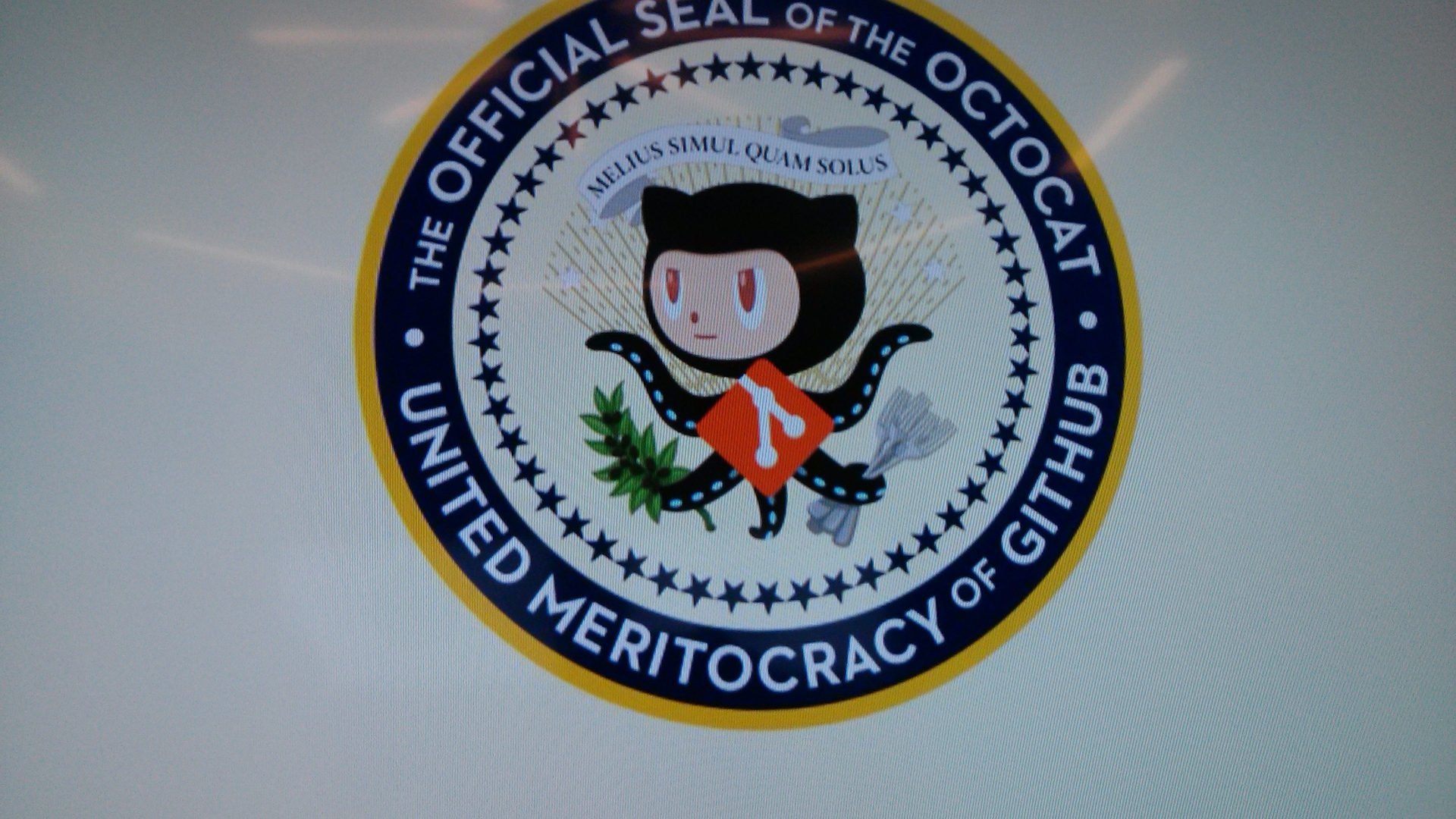Bringing Back The Lucas Plan
by
Felix Holtwell (@AutomatedFully)
March 30, 2018
Featured in Technology and The Worker (#2)
What the Lucas Plan could teach tech today
theory
Bringing Back The Lucas Plan
by
Felix Holtwell
/
March 30, 2018
in
Technology and The Worker
(#2)
What the Lucas Plan could teach tech today
“We got to do something now, the company are not going to do anything and we got to protect ourselves”, proclaimed a shop steward at Lucas Aerospace when filmed by a 1978 documentary by the Open University.
He was explaining the rationale behind the so-called Alternative Corporate Plan, better known as the Lucas Plan. It was proposed by shop stewards in seventies England at the factories of Lucas Aerospace. To stave off pending layoffs, a shop steward committee established a plan that outlined a range of new, socially useful technologies for Lucas to build. With it, they fundamentally challenged the capitalist conception of technology design.
Essentially, they proposed that workers establish control over the design of technology. This bottom-up attempt at design, where not management and capitalists but workers themselves decided what to build, eventually failed. It was stopped by management, sidelined by struggling trade unions and the Labour Party, and eventually washed over by neoliberalism.
The seventies were a heady time, the preceding social-democratic, fordist consensus ran into its own contradictions and died in the face of a triumphant neoliberalism. With it, experiments such as the Lucas Plan died as well. Today, however, neoliberalism is in crisis and to bury it we should look back to precisely those experiments that failed decades ago.
Technology’s neoliberal crisis
One part of the crisis of neoliberalism is the crisis of its technology. The software and information technology sector, often denoted as “tech”, is facing widespread criticism and attacks, with demands for reform stretching wide across society.
Even an establishment publication such as The New York Times now publishes a huge feature headlining: The Case Against Google, about Google’s use of their near monopoly on search to bury competitors’ sites.
Other controversies revolve around companies such as Facebook, Snapchat and Twitter making use of insights into human psychology to make people interact with their products more often and more intensely. This involves everything from gamifying social interaction through likes and making the notification button on Facebook red, to the ubiquity of unlimited vertical scrolling in mobile phone apps.
This has a number of consequences. Studies show that the presence of smartphones damages cognitive capacity, that Facebook use is negatively associated with well-being and that preteens with no access to screens for some time show better social skills than those with screen time.
In public discourse, this combines with fears that social media might harmfully impact political processes (basically Russia buying Facebook ads).
Or, as ex-Facebook executive Chamath Palihapitiya stated:
The short-term, dopamine-driven feedback loops we’ve created are destroying how society works, hearts, likes, thumbs-up. No civil discourse, no cooperation; misinformation, mistruth. And it’s not an American problem — this is not about Russians ads. This is a global problem.
Early employees and execs at Facebook and Google even created the Center for Humane Tech that will propose more humanised tech design choices. Their website states:
Our world-class team of deeply concerned former tech insiders and CEOs intimately understands the culture, business incentives, design techniques, and organizational structures driving how technology hijacks our minds.
Part of this are the usual worries about intergenerational change, technology and centrism starting to fall apart, but there is a core truth in the worries about social media: design of technology is political.
Technologies are designed by capitalist firms, and they do it for capitalist purposes, not for maximising human well-being. In the case of social media, it is designed to pull as much attention as possible into the platform and the ads shown on it.
As Chris Marcellino, a former Apple engineer who worked on the iPhone, has said:
It is not inherently evil to bring people back to your product, it’s capitalism.
The Lucas Plan
This brings us back to the Lucas Plan. At a time where the design of technology is under unprecedented scrutiny, a plan that pushes for workers’ control over it might be an answer.
The Plan was a truly remarkable experiment at the time. The University of Sussex’s Adrian Smith explains:
Over the course of a year they built up their Plan on the basis of the knowledge, skills, experience, and needs of workers and the communities in which they lived. The results included designs for over 150 alternative products. The Plan included market analyses and economic argument; proposed employee training that enhanced and broadened skills; and suggested re-organising work into less hierarchical teams that bridged divisions between tacit knowledge on the shop floor and theoretical engineering knowledge in design shops.
The Financial Times described the Lucas Plan as, “one of the most radical alternative plans ever drawn up by workers for their company” (Financial Times, 23 January 1976). It was nominated for the Nobel Peace Prize in 1979. The New Statesman claimed (1st July 1977) ‘The philosophical and technical implications of the plan are now being discussed on average of twenty five times a week in international media’.
The Lucas Plan eventually failed because of opposition from management, the trade union hierarchy and the government. Lucas Aerospace subsequently had to restructure and shed much of its workforce. Nevertheless, the plan provides great lessons for our current predicament.
Technology is political, yet its design is ultimately in the hands of capitalist firms. The Lucas Plan shows that workers, particularly in the more technically-oriented layers, have the skills and resources to design alternative technologies to those proposed by shareholders and management.
Workers’ control over the design of technology is thus a way to make it more ethical. Many of the problems we encounter with modern-day information technology are caused by unrestricted capitalist control over it, and workers’ control can be a necessary counterweight to push through human-centered design choices.
Composition
So how to build a modern-day Lucas Plan? Developing a plan reminiscent of the Lucas Plan for modern times needs, first and foremost, to be based on the present-day class composition of the workers in tech.
Tech, and more precisely sectors focused on information technology and software, have a notoriously dual composition. On the one hand there are the (generally) highly paid top-end workers, mostly composed of programmers and people employed in fields such as marketing and management. On the other hand there are large armies of underpaid workers employed in functions such as moderation, electronics assembly, warehouse logistics or catering.
The first group has very peculiar characteristics. They are often taken in by the classic Silicon Valley ideology consisting of “lean startup” thinking, social liberalism, and the idea that they are improving the world. Materially, they are also different from large sections of the working class. They earn extremely high wages, are often highly educated, possess specific technical skills, are given significant stock options in their employers’ companies and are highly mobile, notorious for changing jobs very easily.
Besides that, many also have an aspiration to start their own startup one day, in line with Silicon Valley ideology. This adds a certain petty-bourgeois flavour to their composition.
Yet these workers also have their grievances. They are often employed in soul-crushing jobs at large multinationals, some of which (for example Amazon or Tesla) have the reputation of making them work as much as they can and then spitting them out, often in a state of burn-out.
On the other hand, there are subaltern sections of tech workers. These people moderate offensive content on Facebook, stack Amazon boxes in their “fulfillment centres”, drive people around on Uber and Lyft, assemble electronics such as iPhones or serve lunches at Silicon Valley corporate “campuses.”
These workers are generally underpaid, but conduct the drudging work that makes tech multinationals run. Without Facebook moderators watching horrible content all day, the platform would be flooded by it (and Facebook would have no one to train their AI on); without the fleet of elderly workers manning Amazon warehouses, packages would not get delivered; without the staff on Google and Facebook campuses, they would look a lot less utopian.
This section of workers can also be highly mobile in regards to jobs, but less from possibility and more from precarity. They also have fewer ties to the tech sector specifically— whether they work at the warehouses of a self-styled tech company like Blue Apron or the warehouses of any other company matters less for them than it does for programmers.
This bifurcation holds real problems for a modern-day Lucas Plan. If we simply move the control over the design of technology from management and shareholders to a tech worker aristocracy, it might not solve so much.
Yet there are some hopeful tendencies we can build on. Tech workers in Silicon Valley have started to bridge the divide that separates them, with organisations like the Tech Workers Coalition starting to help cafeteria workers organise.
A Guardian piece on their organising even observes some budding solidarity between these two groups arising:
Khaleed is proud of the work he does, and deeply grateful for the union. At first, he found it difficult to talk about his anxieties with coworkers at the roundtable. But he came to find it comforting: “We have solidarity, now.” A cost-of-living raise would mean more security, and a better chance of staying in the apartment where he lives. Khaleed deeply wants to be able to live near his son, and for his son to continue going to the good public school he now attends.
When I asked Khaleed how he felt about the two TWC Facebook employees he had met with, his voice faltered. “I just hope that someday I can help them like they helped me.” When I told one of the engineers, he smiled, and quoted the IWW slogan. “That’s the goal, right – one big union?”
This is precisely the basis on which a modern-day Lucas Plan should be based: solidarity between both groups of tech workers and inclusion of both. The Lucas Plan of the 1970s understood this. The main authors of the Plan were predominantly to be highly-educated engineers, but the people making the products were not. Hence they tried to bridge this gap with proposals that would humanise working conditions as well as technology, and by including common workers.
A shop steward, an engineer, would declare during a public meeting after showing how company plans decided how long bathroom breaks could be:
We say that that form of technology is unacceptable, and if that is the only way to make that technology we should be questioning whether we want to make those kinds of products in that way at all.
Furthermore, the humanisation of work inside tech companies, and not just the end product of it, would also positively impact the work of the core tech workers. In essence, it would serve as the glue to connect both groups.
A Lucas Plan today would thus analyse the composition of tech workers at both sides of the divide, include both of them and mobilise them behind a program of humanisation of labour for themselves and humanised technology for the rest of society.
How to do it?
The practical implementation of workers’ control over design decisions can base itself on already existing policies and experiences, mainly reformist co-determination schemes (where trade-union officials are given seats on corporate boards) or direct-action oriented tactics (where management power is challenged through workplace protest and where workers establish a degree of workplace autonomy).
The choice of these tactics would need to be based on local working class experiences. In some contexts co-determination would make more sense; in some cases direct action would take precedence. In most cases a combination of both will most likely be required.
The first option is a moderate one. Workers’ representation on the boards of companies has been common in industrialised economies, and particularly continental Europe. Even Conservative PM Theresa May proposed implementing it in 2017, before making a U-turn after business lobbying.
As TUC general secretary Frances O’Grady has stated:
Workers on company boards is hardly a radical idea. They’re the norm across most of Europe – including countries with similar single-tier board structures to the UK, such as Sweden. European countries with better worker participation tend to have higher investment in research and development, higher employment rates and lower levels of inequality and poverty.
Expanding the control of these boards to also deciding what products to produce and how to design them in technologically-oriented companies—both software and more traditional industrial companies—would radicalise the non-radical idea of workers representation on company boards.
A second, more radical option, is the establishment of workplace control through organising. A good example of this are the US longshoremen who at certain times of their existence controlled their own work.
As Peter Cole writes in Jacobin:
West Coast longshoremen were “lords” because they earned high wages by blue-collar standards, were paid overtime starting with the seventh hour of a shift, and had protections against laboring under dangerous conditions. They even had the right to stop working at any time if “health and safety” were imperiled. Essentially, to the great consternation of employers, the union controlled much of the workplace.
The hiring hall was the day-to-day locus of union power. Controlled by each local’s elected leadership, the hall decided who would and wouldn’t work. Crucially, under the radically egalitarian policy of “low man out,” the first workers to be dispatched were those who had worked the least in that quarter of the year.
Imagine a programmer at Facebook refusing to make a button red because research shows it would not increase the well-being of users, and being backed up in this decision by a system of workplace solidarity that stretches throughout the company.
From bees to architects
Mike Cooley, one of the key authors behind the Lucas Plan, was fired from his job in 1981 as retaliation for union organising. Afterwards, he became a key author on humanising technology. He also worked with the Greater London Council when—during the height of Thatcherism—it was controlled by the Labour left, and where current Shadow Chancellor John McDonnell earned his spurs.
Just as McDonnell bridges the earlier, failed, resistance to neoliberalism, with our current attempts to replace it, Cooley forms an inspiration for post-neoliberal technology. In an 1980 article he concluded:
The alternatives are stark. Either we will have a future in which human beings are reduced to a sort of bee-like behaviour, reacting to the systems and equipment specified for them; or we will have a future in which masses of people, conscious of their skills and abilities in both a political and a technical sense, decide that they are going to be the architects of a new form of technological development which will enhance human creativity and mean more freedom of choice and expression rather than less. The truth is, we shall have to make the profound decision as to whether we intend to act as architects or behave like bees.
These words ring true today more than ever.
Featured in Technology and The Worker (#2)
author
Felix Holtwell (@AutomatedFully)
Subscribe to Notes from Below
Subscribe now to Notes from Below, and get our print issues sent to your front door three times a year. For every subscriber, we’re also able to print a load of free copies to hand out in workplaces, neighbourhoods, prisons and picket lines. Can you subscribe now and support us in spreading Marxist ideas in the workplace?
Read next

Silicon Valley startups: being evil, again and again
by
Ian Wright
/
March 30, 2018


